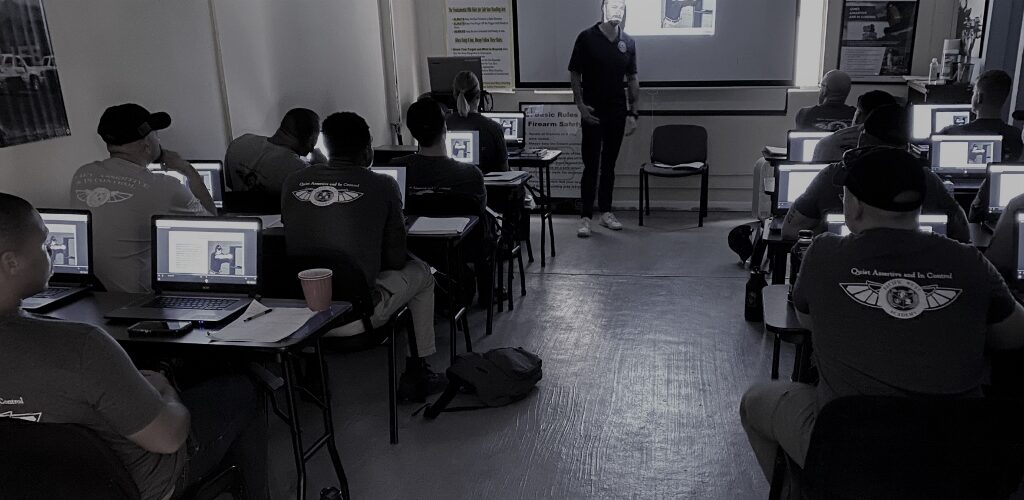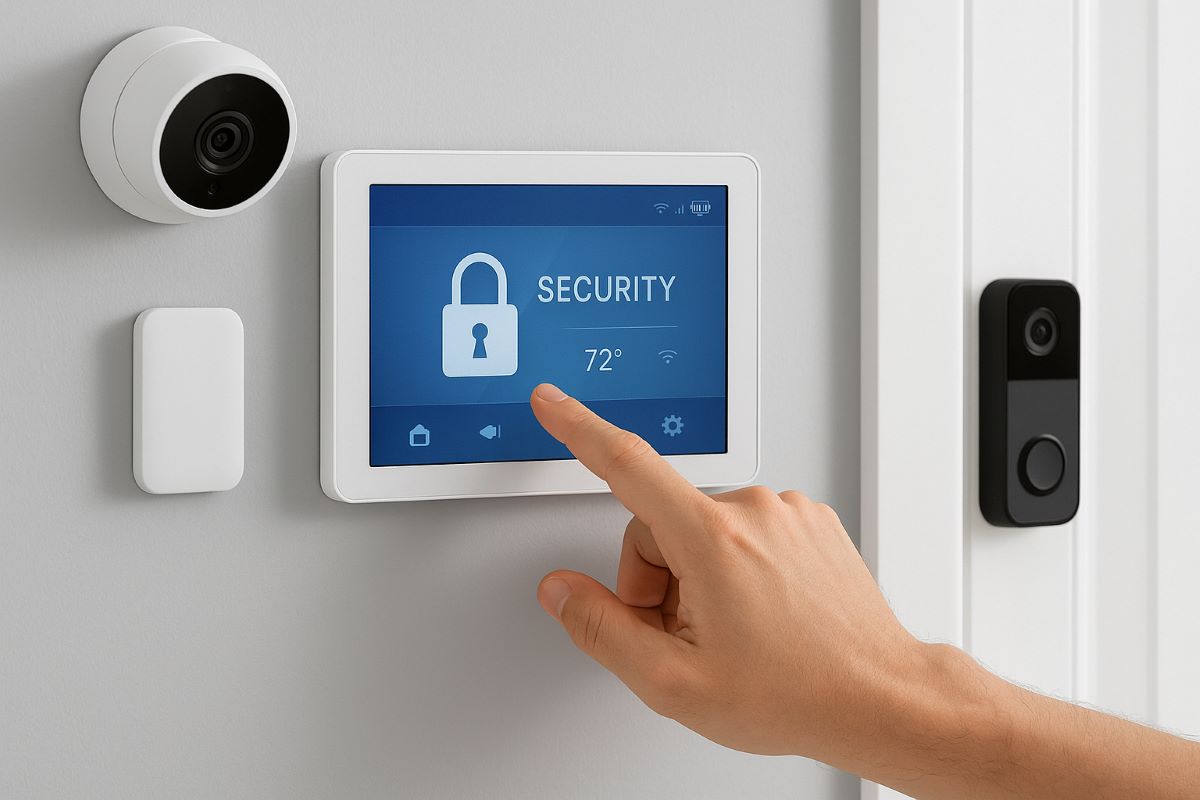

Advancements in Residential Security Technology for 2025
Advancements in Residential Security Technology for 2025
In our increasingly connected and fast-paced world, there’s a high demand for more effective, intelligent and user-friendly residential security systems in the market.
Homeowners are no longer content with depending on the basic alarm systems and key locks for their homes protection. They are now turning to intergraded, proactive, and automated security technologies that provide a peace of mind and real time awareness.
The deeper we move into 2025, the more the security landscape is transforming with new cutting-edge innovations driven by artificial intelligence, smart home integration, and sustainability.
In this blog we will explore the most significant advancements in residential security technology in 2025 exploring how these new innovations are changing how we protect our families and homes.
AI-Powered Surveillance Systems
Artificial intelligence (AI) is redefining residential security surveillance. With these new advancements, modern residential security systems no longer serve solely as a passive recording device. They are now outfitted with AI capabilities allowing them to analyze footage in real-time, process the information and identify any threats or anomalies.
Key Take Aways:
- Facial Recognition: Surveillance systems can now differentiate between family members, guests, delivery personnel, and unknown individuals.
- Behavioral Analysis: Advanced AI systems can detect unusual patterns such as loitering, forced entry attempts, unusual lingering around a property at odd hours.
- False Alarm Prevention: By identifying animals, moving branches, or passing cars, AI can drastically reduce false alarm alerts allowing systems to be more efficient.
These advanced systems learn overtime, adapting to household routines and refining their alert criteria, offering an effective and proactive security layer.
Smart Access Systems
Traditional locks are slowly being replaced or supplemented by smart access control solutions that provide better control and trail record of everyone who enters and exits a home.
- Biometric Access: Fingerprint, facial and iris scanning have now become the new keys for unlocking and getting access to homes. This is an affordable, user friendly and ensures only authorized users gain access to permitted areas.
- Temporary and Remote Access: Homeowners now have the ability to grant temporary access through digital keys to guests, service providers or renters via smartphone apps that can include time restrictions.
- Geofencing Integration: Doors can now automatically secure or open based on the user’s proximity to the home, adding to the convenience without compromising safety.
Smart access control systems can be synced with a various smart home ecosystems allowing for a automated experience in relation to turning on the lights or disarming alarms when authorized users are recognized.
Integrated Smart Home Security Hubs
The rise of IoT (Internet of Things) has led to more centralized control systems that centralize lighting, surveillance, alarms, environmental sensors, and locks under one interface.
- Voice-Controlled: Integration with virtual assistant like “Alexa”, “Google Assistant”, and “Apple HomeKit” has evolved to be more practical and secure. Users can secure doors, arms systems, and check camera feed using voice commands.
- Unified Dashboards: Using one interface-accessible via smartphones, tablets, or smart Tv’s allows users to monitor and control all security devices on a single device.
- Scenario- Based Automation: You can set functions to your home using preautomated scenarios. For example, you can lock all doors, turn off lights, close blinds, and arm motion detectors simultaneously by activating “Away Mode”.
These types of integrations bring efficiency and enhanced responsiveness to home security.
Next-Gen Alarm Systems
Loud sirens aren’t the only functions for alarm systems now. Today’s systems are much more advanced and nuanced with better integrated emergency response protocols. A perfect example of this technology be found at some of our parent company, Advanced Security Concepts accounts where they’ve implemented technology like Avigilon .
What’s New in 2025:
- Silent Alarm Options: Users can trigger silent alarms that notify authorities without alerting the intruder during hostage and burglary situations.
- AI-Driven Threat Detection: AI enabled alarms can now distinguish between fires, carbon monoxide, or water leaks and react accordingly.
- Wireless and Battery-Backed Systems: Modern alarms are resistant to power outages and tampering thanks to encrypted wireless protocols and robust battery backups.
These innovations to alarm systems ensure homeowners receive the appropriate assistance they need in a timely manner.
Drone Assisted Home Surveillance
One of the most attractive frontiers in home security is the use of autonomous drones for aerial surveillance.
Benefits of Security Drones:
- Patrols On Demand: Users can conduct regular scheduled flyovers of their property or inspections in real-time through mobile apps.
- Intruder Tracking: Homes with this technology are outfitted with perimeter sensors or motion detection that deploy drones when an intruder is detected. They have the capability to follow intruders and stream live footage of their location.
- Advanced Sensors: State of the art drones come outfitted with infrared, night vision, and thermal imaging providing the best image capturing capability and mobility that stationary cameras simply can’t compete with.
While this is still an emerging market, 2025 has seen consumer drone security systems become increasingly more user friendly and affordable, making them a viable prospect for high end residential protection.
Environmental and Health Monitoring Integration
Residential security has evolved beyond physical threats. Home security systems are now being deeply integrated with environmental and health monitoring tools to provide a holistic residential protection.
Key Integrations:
- Air Quality and Gas Leak Sensors: Smart sensors alert users of any harmful gases like carbon monoxide, radon, or VOC’s (Volatile Organic Compounds).
- Water Damage Prevention: Leak detection systems can automatically shut off water supply when the pipe bursts or a leak is detected.
- Health Emergency Alerts: Integrated health monitors can detect falls, abnormal heart rates, or distress in elderly resident’s, triggering calls for medical response.
This combination of health and security technology emphasizes protection in every sense of the word.
Decentralized Security with Blockchain
A new trend in 2025 that were seeing more of is the integration of blockchain technology for enhancing privacy and decentralization in home security.
Blockchain Protection:
- Secure Data Storage: All surveillance footage and logs are encrypted and stored on a decentralized network, reducing the risk of data breaches or tampering.
- Smart Contracts: Blockchain based smart contracts allow automated, verifiable access management without intermediaries.
- Audit Trails: From whom accessed the system, when, and what was viewed is immutably recorded for the maximum transparency.
While this technology is still in development, blockchain backed security measures offer a promising alternative to cloud systems vulnerable to hacking.
Energy Efficient and Sustainable Security Technology
The modern homeowner nowadays is conscious about sustainability and in response, manufactures are designing energy efficient security systems that align with eco-conscious lifestyles.
Sustainable Features:
- Solar Powered Cameras: Outdoor cameras powered by small solar panels reduce electricity costs and increase system reliability during blackouts.
- Low Energy Sensors: Motion detectors and alarms are now manufactured to consume less energy without sacrificing performance.
- Recyclable Materials: In other innovations, devices are now made from biodegradable and recyclable components.
These recent developments are proving that the industry is becoming more environmentally conscious.
Conclusion: The Future is Personalized, Proactive, and Preventative
It’s clear that residential security industry is under a full-blown innovation revolution. Estate security is moving from reactive to modern systems that are proactive predicting, preventing, and personalizing security for each home and its unique needs.
Whether you’re a public figure looking to secure your home from threats or a homeowner looking for peace of mind, the upcoming technologies bring promise of more control, convenience, and capability than ever before. At Pacific West Academy you will learn to understand residential security on all it’s aspects to include utilizing the electronic tools provided.
